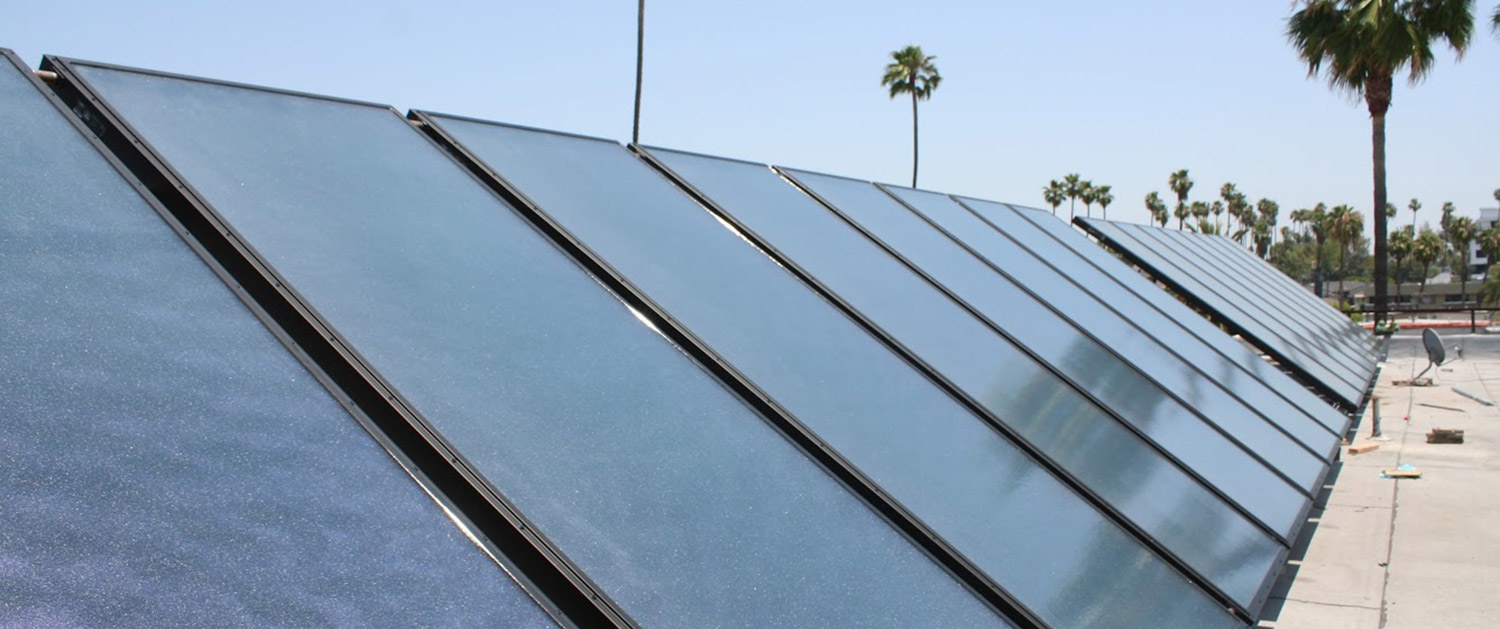Sizing the Solar Array
Independent of the system design type, the first step in sizing a solar array is to determine the hot water load. Once the BTU/day requirements are known, the array can be sized to meet the load. The table below is a solar hot water system sizing guide, and it gives the average daily draws in GPD (gallons per day) for a wide variety of commercial applications. These average daily draws are based on ASHRAE guidelines and contractor experience.
| Application | Average Daily Draw |
| Motels: | |
| 20 units or less | 20 GPD/unit |
| 60 units | 14 GPD/unit |
| 100 units or more | 10 GPD/unit |
| Apartments: | |
| Single Bedroom Unit | 20 GPD/unit |
| Double Bedroom Unit | 35 GPD/unit |
| Triple Bedroom Unit | 45 GPD/unit |
| Quad Bedroom Unit | 55 GPD/unit |
| Dormitories | 13 GPD/student |
| Elementary Schools | 0.6 GPD/student |
| Junior & High Schools | 1.8 GPD/student |
| Food Service: | |
| Full Meal Restaurant & Cafeteria | 2.4 GPD/meal served |
| Fast Food, Drive-ins, Delis | 0.7 GPD/meal served |
Converting the Hot Water Draw to BTU’s
In order to use the daily draw calculated from the table above, we must convert it from gallons per day to BTU’s per day. This conversion relies on the fact that it takes 8.34 BTU’s (British Thermal Units) of energy to raise 1 gallon of water 1 degree F. If solar is to be used as a pre-heater for the existing boiler loop, which is typical, then it will have to raise each gallon of water drawn from mains/well water temperature up to the typical desired setpoint of 135 F. Depending on the region of the country, average mains/wellwater temperatures may be as low as 42¡F in northern Maine up to 77¡F in southern Florida. To determine the energy required to heat each gallon of water, we simply calculate the temperature difference between the mains/wellwater and the setpoint temperature and then multiply that difference by 8.34. Therefore, it would take 776 BTU (8.34 BTU/gal-F*[135 F – 42 F]) on average to heat a gallon of water in northern Maine and only 484 BTU (8.34 BTU/gal-F*[135 F – 77 F]) in southern Florida.
Calculating the Collector Area Required to Meet Hot Water Demands
Optimal sizing of the solar array is achieved by matching the load to the output of the solar array on a clear summer day. By matching system output to clear summer days you ensure that the system functions at maximum capacity without going into stagnation conditions that can decrease component life. Sizing systems along these lines typically result in solar fractions of 60-70%.
Collector output for a clear summer day closely matches category C output from SRCC OG-100 ratings. Our painted absorber collectors have a clear summer day output of 1,035 BTU/sq. ft., and our black chrome absorber output is 1,070 BTU/sq. ft. Using these outputs we can easily calculate the collector area required to heat a gallon of water. This ratio of collector required per GPD of draw can be calculated as:
Rsizing=1.15*8.34*(135-Tmains/well)/Qcollector
Where Qcollector is the collector output of either 1,035 or 1,070 BTU/sq. ft. The factor of 1.15 at the start of the equation is to oversize the array by 15% to account for real-world losses in the piping runs and storage tank as well as mild flow non-uniformities that occur between banks in commercial arrays. Using this equation we would come up with a sizing ratio of 0.56 sq. ft./GPD draw for a system in southern Florida using painted absorbers, and a ratio of 0.86 sq. ft./GPD draw for a system in northern Maine with chrome absorbers.
Determining the total array area is a simple matter of multiplying the sizing ratio for the climate area by the calculated draw in GPD.








